IPL: Pioneering Dry Eye Treatment
Scientifically proven technology for the treatment of Meibomian Gland Dysfunction
Looking for longer-lasting treatment for Dry Eyes?
Dry Eye Disease is one of the most common eye diseases in the world due to an aging population and changes to our modern-day lifestyle. Almost 1 in 5 people experience dry eye syndrome, where the eyes are stinging, scratchy, reddened, and feel as if filled with sand.
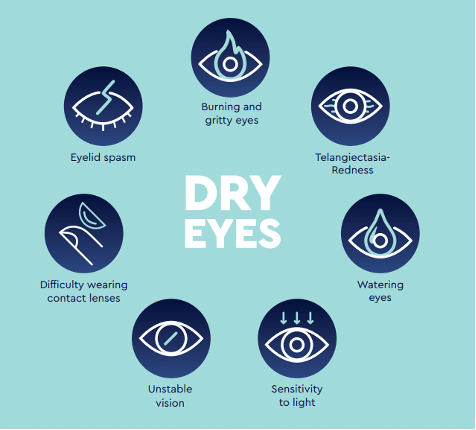
Risk Factors
- Heavy use of screens
- Contact Lens Wear
- Dry Environments
- Air conditioning
- Aging
- Sex (Females are more prone)
- Race (Asian race is most prone)
- Allergies and infections
- Eye surgeries
- Some medications
- Hormonal imbalances
IPL: A Long Lasting Treatment For Meibomian Gland Dysfunction
The E>Eye Medical Grade IPL device is specifically designed for the treatment of dry eye syndrome due to the Meibomian Gland Dysfunction. It is a long-term treatment which stimulates and regenerates damaged oil glands.
The results of several independent international E>Eye-studies speak for themselves:
- 96% Recommend the Treatment
- 83% Confirm Improvement of Symptoms
- 55% Stop Using Eye-Drops After The Treatment
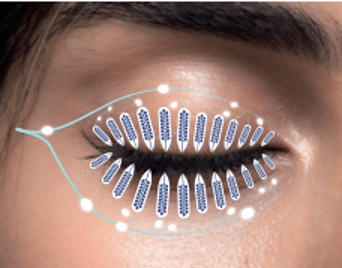
Patients with well-managed Dry Eyes enjoy a higher quality of life with improved visual comfort in their professional and private lives. Patients also experience greater comfort in wearing contact lenses without recurring symptoms. Additionally, treatment of Dry Eye Disease is a major prerequisite to refractive and cataract surgeries, for improved post-surgical outcomes in terms of safety, comfort and quality of vision.
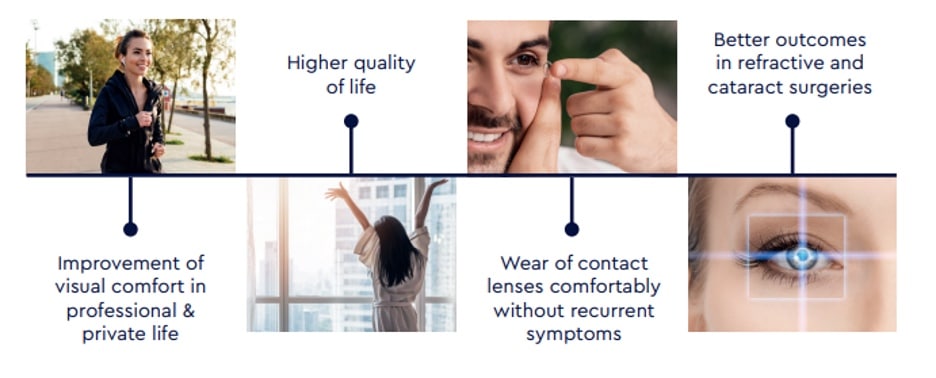
IPL Treatment Procedure
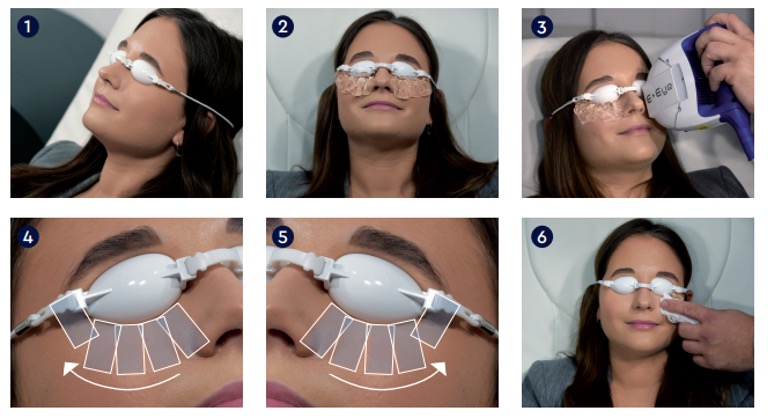
- Sitting in a comfortable chair, your eyes are covered by protective eyecups.
- Hydrogel is applied to the area around the lower eyelid to protect the skin.
- A series of light pulses are performed around the lower eye; gentle and non-invasive.
4-5. The series is repeated in the same way for both eyes.
- The Hydrogel is gently cleansed off the face.
- Our Optometrist performs professional Meibomian gland expression (double expression of lower and upper lids)
- Gentle cleansing of the eye and lids using a saline rinse and an anti-bacterial lid cleansing scrub
- Instillation of anti-bacterial eye gel to improve corneal quality
Treatment duration: 45mins
- The effect of first two treatments lasts a few days up to 2 to 3 weeks.
- The long-lasting effect is expected for minimum 6 months up to 3 years.
- In 60% of cases, effects persist beyond 3 years after the treatment.
- We recommend an E>Eye treatment protocol of four sessions.
- It is recommended to repeat one application once symptoms are coming back.

Grace & Vision Optometrist is proud to be one of the first optometrists in Brisbane to provide IPL treatment, and we are equipped with extensive experiences in dry eye treatments.
The Science Behind IPL
The E>Eye IPL technology generates perfectly calibrated and homogeneously sequenced light pulses. The energy, spectrum and time period are precisely set to stimulate the Meibomian glands in order for them to return their normal function.
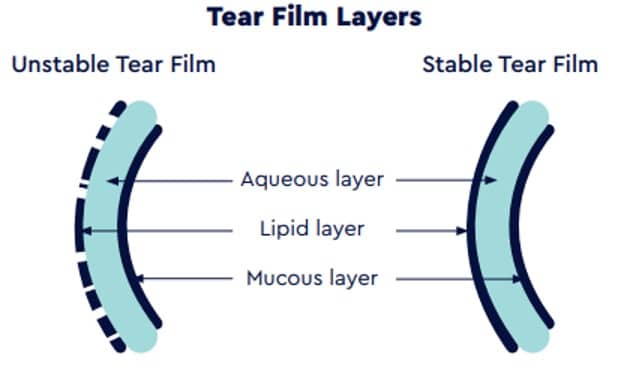
The flashes emitted are directed to the parasympathetic nerve that supplies the Meibomian Glands. The neurotransmitters released then interact with the glands to stimulate secretion. As such, E>Eye does not directly affect the Meibomian glands. Rather, its action is indirect, where the “flashed” areas (underneath the eyelid) are the areas where the parasympathetic nerve passes.
The results are:
- Regeneration of the Meibomian Glands
- Improved quality of the glandular secretions
- Stabilized lipid layer of the tear film
Additionally, the following effects have been proposed to explain the clinical benefits observed with IPL:
- Warming and liquifying effect, facilitating meibum expression following IPL treatment
- Photo-modulation stimulating mitochondria of Meibomian Glands, also enhancing collagen synthesis
- Vascular thrombosis aiding in decrease in inflammation
- Anti-bacterial and anti-parasitic effects
- Connective tissue rejuvenation with fibroblast–collagen synthesis and remodelling reducing eyelid- epithelial turnover and decreasing gland obstruction.
FAQs
What is IPL Therapy?
- This treatment uses brief bursts of light to melt Meibomian Gland secretions (oils that protect the tear layer), followed by in-office therapeutic Meibomian Gland expression.
- The use of IPL to treat dry eyes was first discovered in 2004 and remains the best treatment currently known to relieve the symptoms of Meibomian Gland Dysfunction (a common cause of dry eyes).
How successful is it?
- According to a study conducted in 2015, 86% of patients reported improvement after 3 treatments
- The improved effects are longer lasting than any other treatment currently available and can prevent gland degeneration.
- It’s better to be pre-emptive and treat Meibomian Gland Dysfunction early before it permanently damages your glands.
How many treatments will I need?
- The effects of IPL are cumulative.
- Four to eight treatments are recommended with top-up treatments advised every 3-12 months. The number of treatments and length of time between top-up treatments is dependent on the severity of your dry eye.
What is involved?
- Before treating dry eye, we will need to do a comprehensive eye examination to ensure the health of your eyes.
- A dry eye assessment with a therapeutically qualified Optometrist. This includes:
- Photos of the current state of the eye,
- Dry eye questionnaire,
- Tear quality and oil gland function check
- The procedure involves IPL heat/light treatment around the lower lid area to open the blocked oil glands, then manual gland expression with a therapeutically qualified optometrist.
Our optometrist performs double to triple expression of each gland to achieve the best results.
Sources:
- Dr Malbrel. Polychromatic pulsed light device for a dysfunction described as “dry eye”
- Peking Third University Hospital. Evaluation of the safety and effectiveness of the controlled discharge xenon flash lamp
- Official publication in “Journal of Ophthalmology” of Dr Li. Evaluation of the Safety and Effectiveness of Intense Pulsed Light
- Fondation A de Rothschild and Hôpital Bichat. Efficacy of Intense Regulated Pulsed Light Therapy
- Jiang, X. Research Article Evaluation of the Safety and Effectiveness of Intense Pulsed Light in the Treatment of Meibomian Gland Dysfunction
- S Egri. Efficacy of intense pulsed light therapy in the treatment of Meibomian gland dysfunction-related severe dry eye
- Jennifer P. Craig, Chen, Y.-H., & Turnbull, P. R. K. Prospective trial of intense pulsed light for the treatment of meibomian gland dysfunction
- Carones Ophthalmology Center. Ocular Surface Workup in Patients with Meibomian Gland Dysfunction Treated with Intense Regulated Pulsed Light
- Julie M Albietz, Katrina L Schmid. Intense pulsed light treatment and meibomian gland expression for moderate to advanced meibomian gland dysfunction
- Özgün Melike Gedar Totuk. Efficacy of Intense Pulsed Light Treatment for Moderate to Severe Acute Blepharitis or Blepharoconjunctivitis: A Retrospective Case Series (DOI: 10.4274/tjo.galenos.2020.28924)
- Luca Vigo. Ocular Surface Workup in Patients with Meibomian Gland Dysfunction Treated with Intense Regulated Pulsed Light (DOI: 10.3390/diagnostics9040147)
Jennifer P. Craig. Randomised double-masked placebo-controlled trial of the cumulative treatment efficacy profile of intense pulsed light therapy for meibomian gland dysfunction (DOI: 10.1016/j.jtos.2020.01.003)
Book Dry Eye Treatment Today
Grace & Vision Optometry accepts all major health funds
Use your optical health funds benefits on a new pair of prescription glasses or sunglasses.

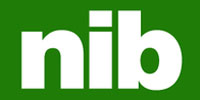
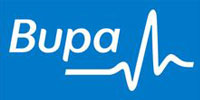


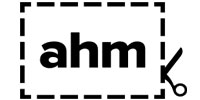

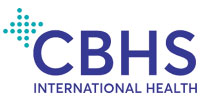


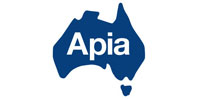






... and many more. Feel free to contact us if you don't see your health fund.